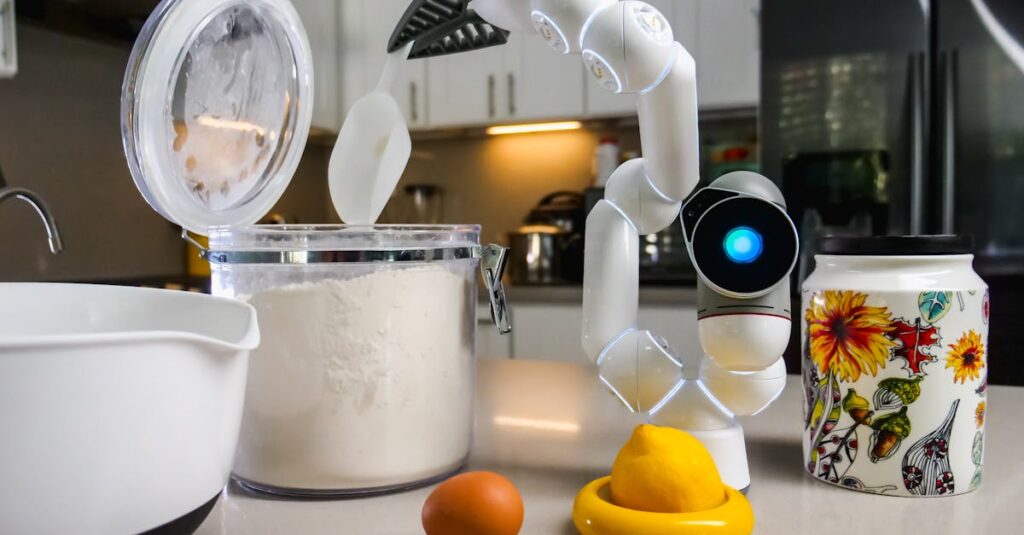The New Face of Baking in 2025
Baking in 2025 looks a lot different than it did even a few years ago. What used to be about butter, sugar, and long weekends in the kitchen is now about balance, innovation, and, surprisingly, technology. Bakers today aren’t just following recipes; they’re experimenting with data-driven flavor pairings, health-conscious swaps, and even AI-generated instructions that adjust for altitude, humidity, and personal taste preferences. So, what’s actually happening in kitchens around the world right now? Let’s find out.
Healthy Sweets Are Finally Delicious
For years, “healthy desserts” felt like a polite way to describe something that tasted like cardboard. But 2025 changed that. Thanks to better ingredient innovation and more adventurous home bakers, guilt-free sweets now stand shoulder-to-shoulder with traditional ones. Think almond flour brownies that stay fudgy for days or oat-based cookies sweetened naturally with dates instead of refined sugar.
Brands are also catching on. Supermarkets now stock shelves with natural sweeteners that don’t spike blood sugar, like monk fruit blends or fermented honey. One small bakery in Portland made headlines this year for its protein croissants that use chickpea flour and pea protein while still flaking like the real thing. The owner joked that customers only realized it was a “healthy” pastry after the fifth bite. That’s where we are now, wellness without compromise.
Popular Health-Driven Baking Trends
- Adaptogenic baking: Cookies and muffins infused with mushrooms like reishi or cordyceps for stress relief and energy.
- Functional flours: Using flours made from banana, cassava, or even watermelon seed for better nutrition and gut health.
- Reduced-sugar glazes: Bakers using fruit reductions or stevia blends to mimic the shine and sweetness of traditional icing.
It’s not just about cutting calories anymore. It’s about feeling good after dessert, which used to sound impossible.
AI Becomes the Smartest Baker in the Room
In 2025, AI isn’t just recommending playlists or writing emails, it’s baking cookies. Recipe-generating AI tools can now build personalized baking plans based on your dietary preferences, pantry inventory, and even mood. Picture this: you say, “I want something comforting, not too sweet, and I only have oats, apples, and cinnamon.” Seconds later, your smart oven screen flashes an AI-designed apple crumble recipe, complete with baking time optimized for your oven model.
There’s even a growing community of “AI pastry hackers” who share and tweak AI-generated recipes online. One Reddit user posted that their AI suggested a lavender-tahini shortbread, which turned out so good it became their bakery’s best-seller. The fun part? The AI originally meant to pair lavender with sesame oil but mixed it up with tahini. A happy accident turned into a hit product.
How AI Is Changing the Way We Bake
- Flavor prediction: Algorithms trained on thousands of recipes now suggest unexpected but balanced pairings, like mango with basil or chocolate with miso.
- Precision scaling: AI tools automatically resize recipes for one, two, or twenty servings without wrecking proportions.
- Waste reduction: Smart apps track leftover ingredients and propose ways to use them up, saving money and cutting food waste.
Even professional chefs are using AI as a creative partner. A London-based pâtisserie recently co-developed a line of AI-assisted desserts that respond to seasonal availability. The AI suggested switching strawberries for roasted rhubarb in early spring to maintain the same acidity balance. It’s a fascinating blend of science and artistry.
Retro Revival: Comfort Bakes Make a Comeback
As much as technology and health dominate 2025’s baking trends, nostalgia still has a seat at the table. During uncertain times, people turn back to familiar tastes, banana bread, chocolate chip cookies, and old-school pound cakes are popping up again, but with modern twists. Think matcha banana bread or salted caramel pound cake with a vegan glaze.
There’s a cozy joy in revisiting what your grandmother used to make, even if your version involves a smart oven and a gluten-free mix. A friend of mine started baking classic oatmeal cookies every Sunday just because “the smell makes the week feel softer.” That’s the heart of this trend: baking as therapy, not just a hobby.
3D-Printed Pastries and Smart Ovens
It sounds futuristic, but 3D-printed cakes are now a real thing. High-end restaurants and boutique bakeries use food printers to create precise geometric desserts that look like edible sculptures. The technology lets bakers layer flavors and textures in ways that traditional methods never could. Imagine a raspberry mousse dome with a wafer-thin pistachio spiral printed perfectly on top.
Meanwhile, smart ovens have become kitchen staples. These appliances detect dough rise, control humidity, and even send alerts to your phone when your sourdough hits peak crust color. For busy home bakers, it’s a game-changer. You can literally proof bread while on a Zoom call and have it bake itself when the dough is ready.
Where Baking Is Headed Next
So, what’s next? Expect more collaboration between human intuition and digital precision. AI can analyze flavor chemistry, but only humans can decide what feels right. There’s also growing interest in sustainable baking: upcycled ingredients like spent grain flour or cocoa husk powder are becoming mainstream. The future baker might be part chef, part data analyst, and part environmentalist.
Still, no matter how advanced the tools get, baking remains something deeply human. It’s about slowing down, getting your hands messy, and sharing something warm with someone else. Whether you’re frosting a protein cupcake or following an AI’s instructions for the perfect croissant, the core of baking hasn’t changed, it’s still about joy, creativity, and a little bit of magic.
Final Whisk
If you want to ride the 2025 baking wave, start small. Try swapping refined sugar for a natural sweetener, or ask an AI assistant for a recipe that uses what’s already in your pantry. Experiment, fail, and laugh through it. Baking trends will keep changing, but the best trend of all is still the same: making something that makes people smile.

